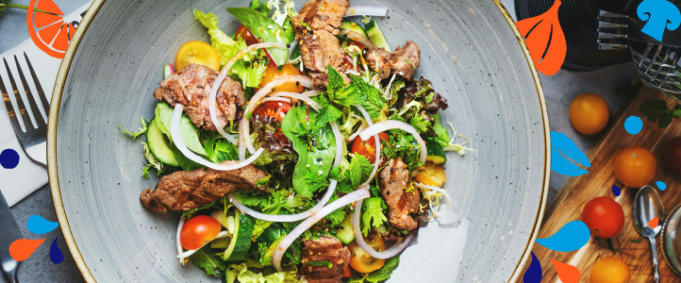What’s a good, balanced diet for diabetes? Let’s talk about it!
First off, there’s no one-size-fits-all diet for diabetes, but what you eat plays a big role in managing it and feeling your best. The carbs you munch on affect your blood sugar levels, so it’s crucial to choose wisely.
Now, let’s break down the five main food groups for a healthy, balanced diet:
- Fruits and Vegetables:
- Go for a variety of colors; they’re low in calories and loaded with essential nutrients.
- Fresh, frozen, dried, or canned – they all count. Just steer clear of fruit juices and smoothies since they lack fiber.
- Aim for at least five portions a day – a portion is roughly what fits in your palm.
- Starchy Foods:
- Think potatoes, rice, pasta, bread – all containing carbs that turn into glucose.
- Opt for low glycemic index (GI) options like whole grains to keep your blood sugar levels in check.
- Include starchy foods in your daily meals.
- Protein Foods:
- Meat and fish are protein powerhouses, but go easy on red and processed meats.
- Oily fish like salmon is rich in omega-3, great for your heart.
- Include protein in your daily meals, and aim for oily fish at least once or twice a week.
- Dairy and Alternatives:
- Milk, cheese, and yogurt are packed with calcium and protein.
- Choose lower-fat options to keep your bones, teeth, and muscles healthy.
- Include some dairy or alternatives in your daily intake.
- Oils and Spreads:
- We need fats, but opt for healthier ones like olive oil and nut butters.
- These unsaturated fats are good for your heart.
Now, a quick word about what to avoid:
- Foods High in Fat, Salt, and Sugar:
- Limit biscuits, crisps, chocolates, cakes, ice cream, and sugary drinks.
- Opt for diet or low-calorie alternatives.
- Keep an eye on your salt intake – no more than 1 tsp (6g) a day.
Remember, there’s no such thing as “diabetic” ice cream or sweets, and it’s against the law to label them that way. The key is a balanced diet, so try cooking more at home, reading food labels, and choosing unsweetened drinks. And, hey, get creative with your own sauces – it’s a tasty way to stay healthy!





















